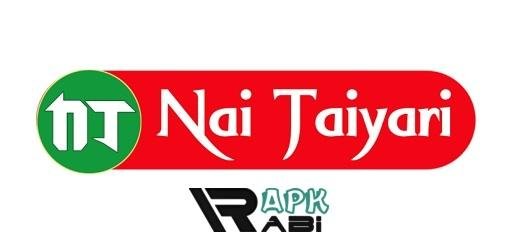
Nai Tayari.com is an independent online platform launched and managed by Deepak Kumar Gupta. The website serves as a resource hub for mobile-app tutorials, technology tips, and how-to guides. According to its About Us section, the platform aims to help users navigate common challenges related to smartphone usage, app installations, and digital security.
India’s rapid adoption of mobile internet—reaching over 1.2 billion subscribers by 2024, as reported by the Telecom Regulatory Authority of India (TRAI)—has increased the demand for beginner-friendly digital learning platforms. Nai Tayari fills this gap by offering free, straightforward tutorials targeted at new or non-technical smartphone users.
Unlike larger ed-tech platforms backed by academic or corporate institutions, Nai Tayari focuses on real-world tech solutions, particularly mobile applications and payment tools. Its content is designed to be accessible and practical, rather than academic or certification-based.
2. Core Offerings: Courses & Educational Resources
Nai Tayari.com primarily publishes articles under two categories: Apps and How To guides. The Apps section includes tutorials on mobile number locator apps, call recording tools, and phone tracking utilities. These guides explain how to install apps safely and use their features effectively.
The How To section offers instructions on two-factor authentication and OTP (One-Time Password) handling, as well as guidance on mobile payment services such as PhonePe. For example, the Reserve Bank of India (RBI) recommends using verified and authorized apps for secure online payments, advice that aligns with tutorials provided on the site.
Unlike structured online courses offered by official digital literacy programs such as the Pradhan Mantri Gramin Digital Saksharta Abhiyan (PMGDISHA), Nai Tayari does not provide video lectures, certifications, or downloadable study material. Instead, it focuses on quick, text-based solutions that solve specific problems instantly.
3. Target Audience & Reach
The target audience for Nai Tayari.com is mainly Indian smartphone users with limited technical expertise. Many first-time internet users in India are accessing services primarily through mobile devices, according to the Ministry of Electronics and Information Technology (MeitY). Nai Tayari serves this demographic by publishing tutorials in simple language, often mixing English and Hindi for clarity.
The platform is updated periodically to address trending tech topics like phone tracking, OTP security, and mobile recharges. While there is no publicly available traffic data, its content focus suggests a niche audience seeking immediate, step-by-step tech guidance rather than academic exam preparation or advanced IT skills.
4. Navigating the Platform: Website Structure & Sections
The website layout is user-friendly, with a top menu linking to Home, Apps, How To, About Us, and Privacy Policy sections. Posts are organized by category, making it easy for readers to locate tutorials. Each article provides estimated reading time and step-by-step instructions for clarity.
A typical post begins with a short introduction, followed by bullet-point takeaways, a list of app features, and FAQs. This structure mirrors guidance formats recommended by the National Digital Literacy Mission (NDLM) for beginner-level internet users.
While navigation is simple, the platform lacks advanced features like topic clustering, filters, or interactive elements found in larger educational portals.
5. Content Themes & Editorial Focus
The website’s main content themes include mobile number locator applications, call recording tools, OTP security measures, mobile recharge solutions, and tutorials for popular apps like WhatsApp and PhonePe. The editorial tone is practical, focusing on problem-solving for users who may not have prior technical knowledge.
For example, tutorials often mention digital payment security, which is a growing concern in India. According to the RBI’s Digital Payments Index, secure mobile transactions are essential as UPI-based payments have surpassed billions of transactions monthly. Nai Tayari contributes to this awareness by guiding users through safe app usage and OTP verification.
However, there is little reference to cybersecurity standards or official government advisories, which would increase the platform’s credibility further.
6. Credibility & Source Quality
Credibility on Nai Tayari.com is based on personal experience rather than expert or institutional verification. The platform rarely cites official sources such as the Indian Computer Emergency Response Team (CERT-In), which provides government-issued cybersecurity advisories.
When discussing OTP safety or mobile tracking, authoritative references would strengthen claims and guide users to verified security practices. As of now, tutorials are useful for beginners but may lack depth and official validation, making it important for users to cross-check critical information from recognized sources like MeitY or CERT-In.
7. User Experience & Accessibility
The website is designed to load quickly on mobile devices, which aligns with best practices recommended by the National Informatics Centre (NIC) for mobile-first platforms. Articles are short, text-focused, and easy to scroll through, making them suitable for low-data users.
However, accessibility features like screen reader support, alternative text for images, and adjustable font size are not clearly implemented. According to guidelines from the World Wide Web Consortium (W3C) Web Accessibility Initiative, such features are essential for inclusive digital learning, particularly for users with visual or cognitive impairments.
8. Monetization & Business Model
The website is free to access and likely monetized through display advertisements and affiliate links. Posts that recommend third-party apps may include promotional references. There are no subscription plans or membership options.
While advertising is a common model for free platforms, transparency on affiliate relationships would build user trust. Established organizations like the Advertising Standards Council of India (ASCI) recommend clear disclosure of promotional content to maintain credibility.
9. Strengths & Weaknesses
Strengths:
- Free and accessible content
- Simple, beginner-friendly tutorials
- Covers trending mobile applications
- Fast-loading, mobile-optimized website
Weaknesses:
- Limited use of authoritative sources
- No structured courses or certifications
- Minimal accessibility features
- Lack of transparency in monetization
Compared to official digital literacy initiatives such as PMGDISHA, Nai Tayari lacks structured learning paths, expert verification, and standardized training material.
10. Conclusion & Recommendations
Nai Tayari.com is a useful platform for beginners who need quick, practical help with mobile technology. It serves an important role in bridging the digital skills gap for first-time smartphone users in India. However, its reliance on personal experience, limited authoritative sourcing, and lack of structured learning materials leave room for improvement.
To increase reliability and reach, Nai Tayari should:
- Reference official cybersecurity and payment safety guidelines from CERT-In and RBI.
- Adopt accessibility standards outlined by W3C.
- Provide downloadable resources or video tutorials for offline learning.
- Disclose advertising and affiliate partnerships for transparency.
By integrating official information and following recognized digital literacy frameworks, Nai Tayari could grow into a more credible and impactful platform for India’s expanding online population.





